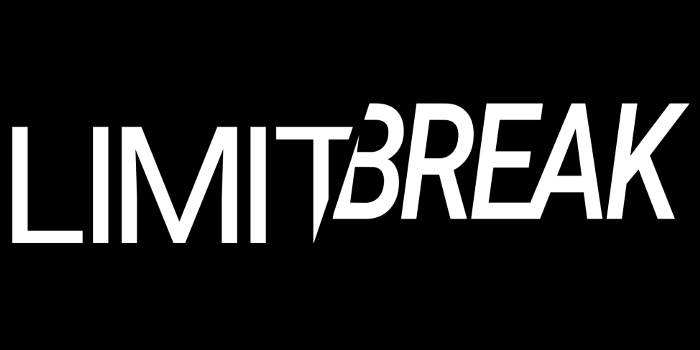AFFILIATE MARKETING
A New Way To Get Rich From NFTs?

I know we all say we’re here just for the art, but let’s be real, we all want to get rich off our JPEGs too! Unless you’re deep in the space researching every day, on top of the latest hot mints, and have the sharpest analytic tools at your disposal – the odds are against you.
Another way to generate cash here is by creating your own collections. With the great equalizer of lifetime royalties in play, NFTs have changed the financial landscape for artists and project creators to venture into the digital realm. However, with the introduction of marketplaces such as x2y2.io and blur.io dabbling with zero creator royalties, the notion that NFTs were a cast iron avenue for artists to earn an income for life came into doubt.
Soon enough, this quickly turned into ‘it’s only a matter of time until royalties become a thing of the past.’
‘potential to reshape the nft landscape’
Enter Gabriel Leydon, CEO of Limit Break, who announced that they have been working on a solution to the issue. Their blog post begins:
“Limit Break is introducing opt-in, backwards-compatible, programmable royalties contracts that work on any ERC-721 contract through a novel staking solution. Our initial goal was simply to give creators the power to decide how royalties will be distributed on the smart contract layer, but as you will read below, this release will allow for numerous applications with the potential to radically reshape the NFT landscape.”
Essentially, Limit Break are introducing a way for project creators to wrap their NFT so that they can enforce royalties on chain. The NFTs created are staked, with the creator receiving a wrapped version of their NFT in its place. This incarnation of their token is set so it can only trade on marketplaces which enforce royalties. Additionally, the wrapped version of the NFT allows for a few other features:
- The creator can set minimum and maximum floors for listings. Terrible news for professional undercutters!
- The ability for the owner of an NFT to rent it out, and for the rent payments to be collected on chain
- Gaming utility, in the sense that tasks or quests in-game can be completed and the state of the NFT would be automatically updated, burned or replaced
- And, royalty sharing with affiliates…..
A New Way to profit from nfts?
Royalty sharing with affiliates could open up a whole new path to generating income from NFTs, even if you have never owned the NFT itself!
There’s a few ways this can be achieved. The first is by the creator setting up a royalty share agreement with minters. The creator could action a condition that anyone who mints the collection will forever receive x% of royalties for every sale on the specific NFT that they minted.This solution potentially solves more than just the artist commission problem outlined at the start of the article.
Quite often, a collection’s hype and wider interest will wane soon after it has minted out. Certainly, it’s fair to say that a holder of any NFT loses interest in a project as soon as they no longer have a vested interest in the asset. This royalty share dynamic could completely change that, as it creates an incentive for those who minted to add growth to the project, even long after they sold their last one.
Similar to the above example, a creator can add extra conditions to the royalty share. For example, it could be set that commission will be accrued by the collector, but only after the NFT has been held for a specific length of time first, as shown in the below example:
- NFT is minted by the collector
- Condition set by the creator that the NFT must be held for 1+ years in order to be eligible for royalties post-sale
- Collector sells after holding for 15 months
- Collector is eligible and receives lifetime royalties alongside the creator
This strategy incentivizes long term holding; something which many collections suffer a lack of within the fast paced environment of this market.
Affiliate marketing in web3
However, there’s even a way that you can earn royalties whilst never having minted or held the NFT in question. A project creator could approach a popular influencer or website with the proposition of a cut of the royalties in return for their marketing and promotion. With traditional affiliate sites, generally a unique URL or code will be issued which attaches each sale of the product to the affiliate who closed the sale via their link. The same process could be applied with NFTs quite easily!
Moreover, as all transactions are visible on chain with the ability to have proceeds divided up between wallets automatically, this innovation from Limit Break eliminates the need for a middle man to keep track of sales figures and execute payments.
nothing short of revolutionary
These proposed changes to how the NFT market will operate is nothing short of revolutionary.
Gabriel Leydon’s NFT project, DigiDaigaku, was a free mint itself and relies heavily on secondary sales to generate revenue. You can be sure that there will be a concerted effort to bring these ideas all to fruition based on that alone.
Furthermore, this could extend the reach of who’s onboarded to NFTs outside of the current sphere. If Web2 marketers see the massive profit potential of affiliate marketing here, they’ll likely flock in their droves!
This is a Contributor Post. Opinions expressed here are opinions of the Contributor. Influencive does not endorse or review brands mentioned; does not and cannot investigate relationships with brands, products, and people mentioned and is up to the Contributor to disclose. Contributors, amongst other accounts and articles may be professional fee-based.











You must be logged in to post a comment Login